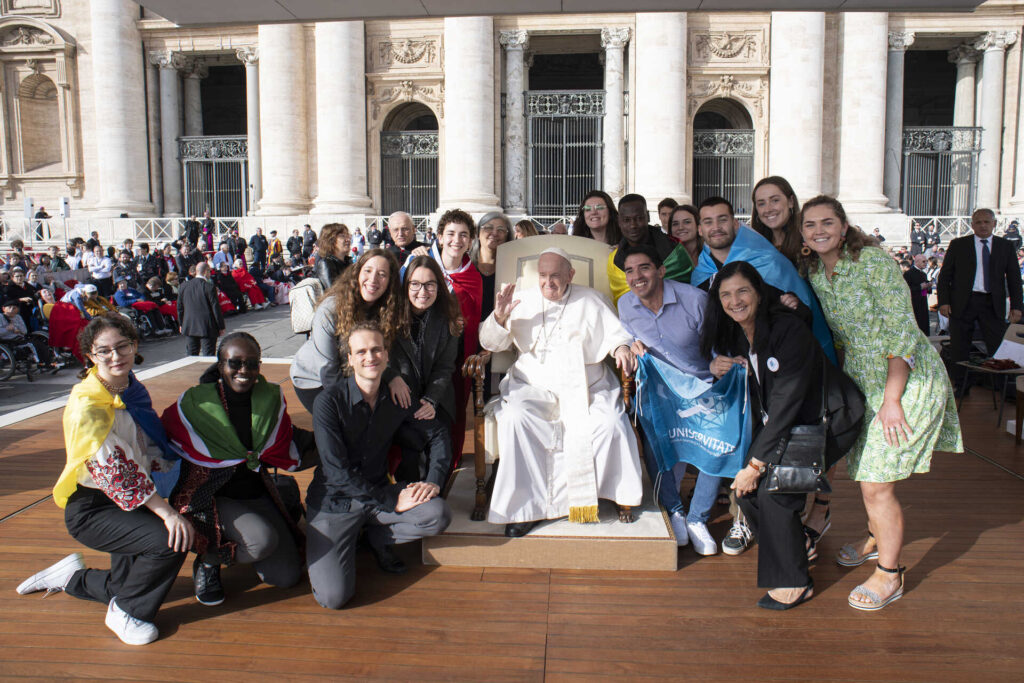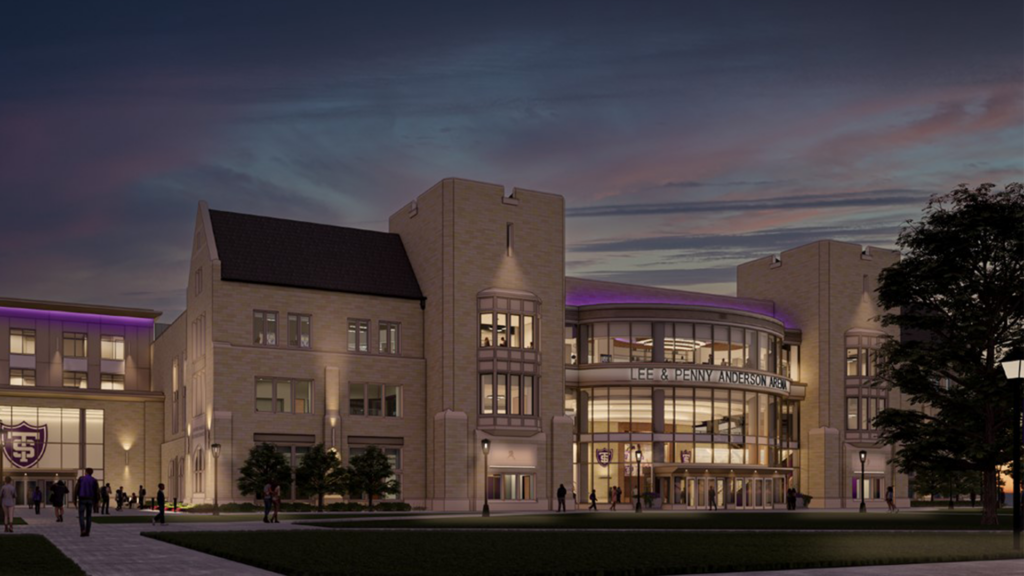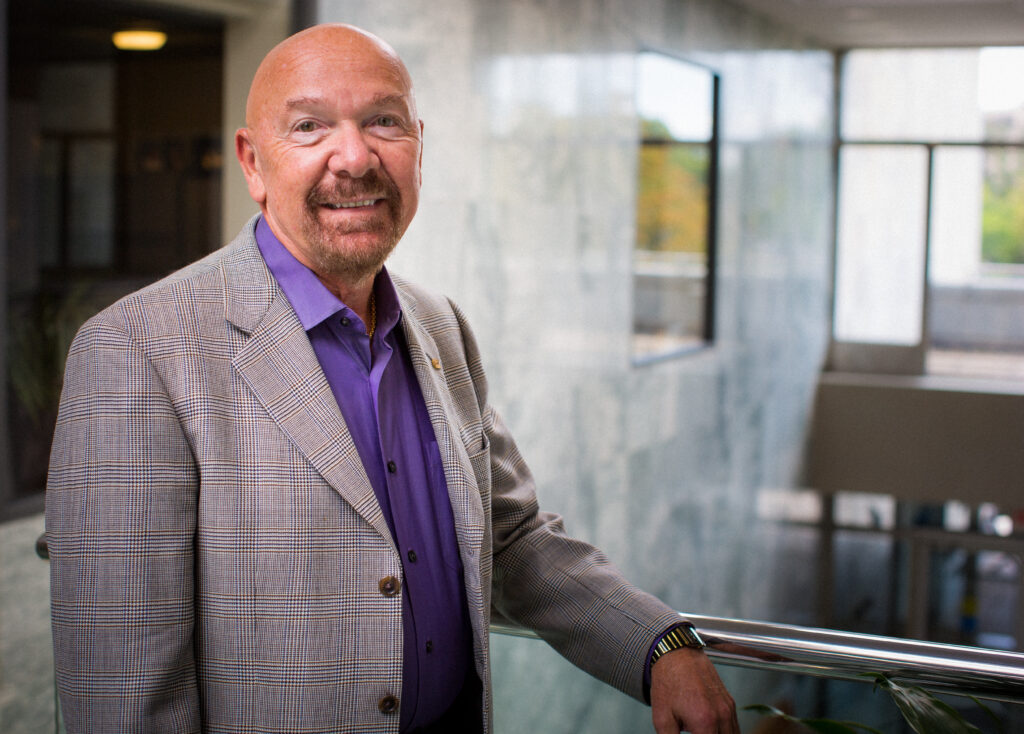Records set for undergrad enrollment, overall credit hours
Another in a series of large freshman classes this fall contributed to the highest undergraduate enrollment ever at the University of St. Thomas. The number of credit hours, which represents the number of courses that students are taking, also set a record.
Enrollment at the graduate level declined slightly as did total enrollment of 10,963, down 21 from last year. The slight drop comes after three consecutive years of slight increases.
Undergraduate enrollment is a record-high 6,164; this is up 88 students from 2007, up 357 from 2006, and up 580 from 2005. The university has 1,322 new freshmen this year, which is the second-highest in St. Thomas' 123-year history. This year's number is eight more than last year, and just three less than the record of 1,325 set three years ago.
The undergraduate numbers include 312 students who transferred here from other colleges. That's down from 340 last year but up from 306 in 2006.
Graduate-level enrollment this year is 4,799, down 109 students from last year.
The university's peak enrollment of 11,570 was set in 2001. That year students took 108,675 credit hours; this year they are taking a record-high 122,916.
One reason for the increase in credit hours per student is an increase in the number of undergraduates as compared to graduate students, who tend to take fewer credits per semester. In 2001, for example, undergraduates comprised 46.8 percent of total enrollment; this fall, undergrads represent 56.2 percent of the student body.
A second reason is that many graduate students are taking more credits per semester. The Opus College of Business, for example, has 3.75 percent fewer students in its graduate business programs this year but they are taking 6 percent more credit hours.
At a time when some colleges and universities are enrolling more women than men, the St. Thomas ratio for undergraduates, including the new freshmen, is 52 percent men and 48 percent women. At the graduate level it's 53 percent women, and overall it's 51 percent women.
The percentage of students of color among the new freshmen this year is about the same as last year, 12.6 percent. Two years ago it was 10 percent. At the undergraduate level this fall, 11 percent are students of color; at the graduate level, it's 10 percent.
Other characteristics of the freshman class are similar to last year. They come from 378 high schools and 27 states. They have an average class rank of 73 percent and an average high school G.P.A. of 3.5. The class includes 22 valedictorians, three National Merit Scholars and 127 students with a perfect 4.0 high school G.P.A. The average ACT score for the new students is 25.12.
Another record this year is the number of students living on the St. Paul campus. That number, 2,558, includes undergraduate members of the St. John Vianney Seminary.
With 152 seminarians (just two shy of last year's record) St. John Vianney is the largest college-level seminary in the United States. Last year, the seminarians lived in the SJV building on the main campus as well as in six off-campus locations. This year they live in two locations: the main building and in a university-owned apartment at 2085 Grand Ave.
Enrollment on the university's St. Paul campus is 7,460, up from 7,332 last year. St. Thomas is limited to 8,750 students on its main campus under a Conditional Use Permit that was approved in 2004. The highest enrollment in St. Paul was 8,712 in 1991, the year before the university opened its Minneapolis campus.
Enrollment at the Minneapolis campus this fall is 3,042, up 12 from a year ago.
Here’s the graduate-level enrollment and credit hours, and the percent change from last year, for St. Thomas’ colleges and schools:
Program Enrollment % Change from 2007 Credit hours % Change from 2007 College of Arts and Sciences 185 - 1.6 753 - 1.83 Opus College of Business: business programs 1,693 - 3.75 9,813 + 6.03 Opus College of Business:Graduate Programs in Software Engineering
352 -7.85 1,816 + .17 School of Divinity 126 + 5
1,223 + 4.89 College of Applied Professional Studies: School of Education 1,203 + 9.76 5,958 + 8.66 College of Applied Professional Studies: School of Professional Psychology
199 + 3.65
1,281 +11.39 School of Engineering 212 - 4.5 834 - 5.01 School of Law 457 - 3.38 6,768 - .1 School of Social Work 372 + 11.71 3,238 + 10.29






